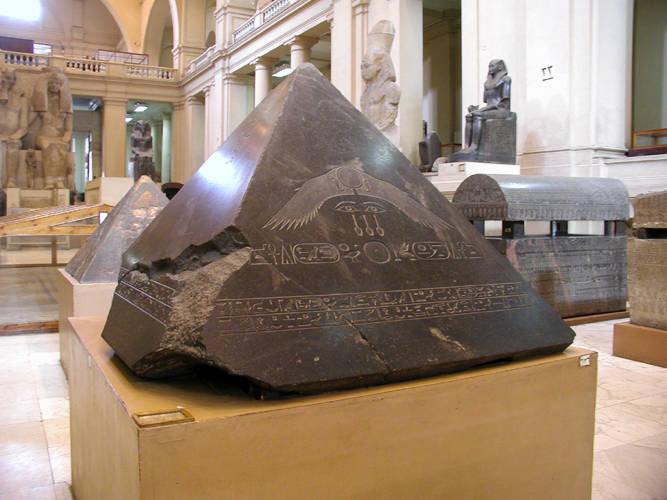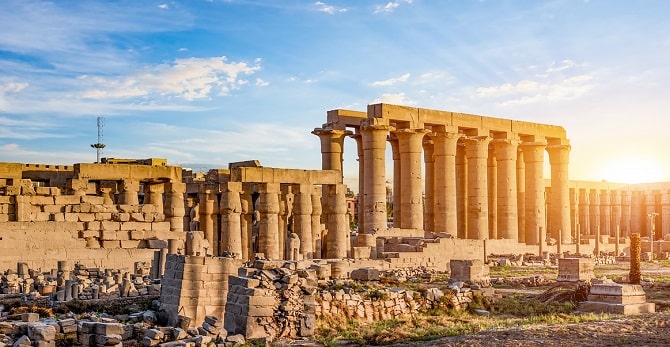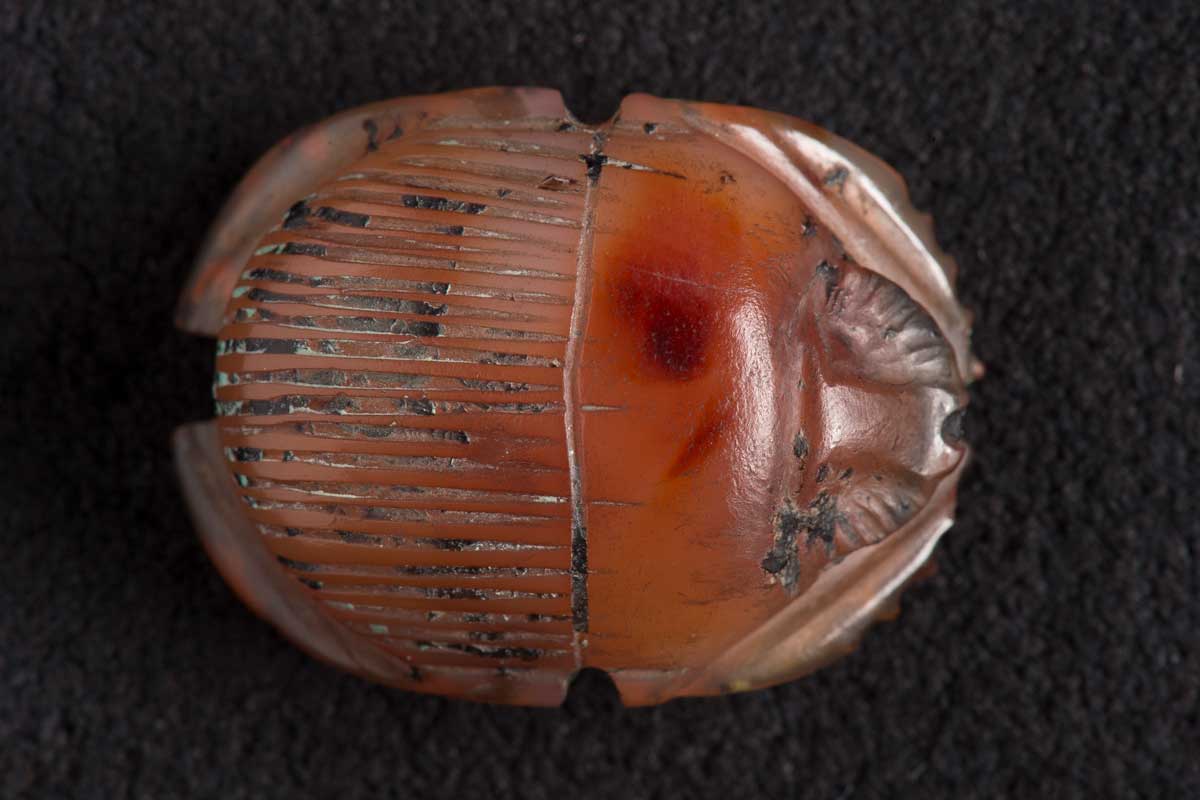Decoding the Enigmatic Symbols of Ancient Egypt
There were, in fact, many several symbols in the lives of the ancient Egyptians with diverse usages and meanings. Many of these symbols survived until today and give us great ideas of about these symbols and their usages in ancient Egypt.
The Pharaohs excelled in the creation and usages of these symbols to the extent that they played a role in every aspect of their lives, including social, religious, and cultural activities.
Ankh Egyptian Symbol Of Life
The ancient Egyptians created the key, or the Ankh as they used to call it in the reign of the Pharaohs. The Ankh has this distinctive shape that blends the ancient Egyptian style with the Christian Cross. It is commonly found in many ancient Egyptian tombs and Pharaonic temples. The Ankh is usually represented in portraits where the deceased is resurrected after death. Ankh symbol meaning the key to life as it represented the resurrection of the death as the ancient Egyptians believed in the afterlife.
The Ankh was produced in many shapes and using various materials like metal and sometimes wood that were in some cases plated by gold or copper in a symbol of the sun.
The ancient Egyptians associated the Ankh with life and birth giving. Some scholars noted that the oval twisted handle with two opposite points at head represent the male and the female. They also added that this represents the gathering of Isis and Osiris.
Some historians had other theories. They noted that the Ankh represents various indications. The oval hand represents the Nile Delta. The vertical part symbolizes the path of the River Nile, while the horizontal part represents the East and the West of the country.
Egypt Symol of Eternity (The Pillar of Djed)
The pillar of Djed is one of the most ancient Pharaonic symbols. It consists of a pillar or column with four layers of the lotus flower. It represents eternity and it was commonly mentioned with the name of the Pharaoh with the Ankh.
Historians said that the pillar of Djed dates back to the per dynastic period. There was a festival in Memphis to create the pillar of Djed as the Pharaoh himself used to participate in creating the pillar using strong ropes.
These rituals were carried out to wish that the ruling period of the Pharaoh would be fruitful and long. Some researchers also noted that the ancient Egyptians believed that pillar of Djed represents the spiral cord of Osiris. The upper part of the pillar was colored in green or red, while the column itself used to be colored in white, black, or yellow.

Symbol of Egypt Power (The Scepter of Was)
The scepter of Was consisted of a stick that contained many ancient Egyptian inscriptions. The Pharaonic kings and gods were represented holding the scepter of Was as a symbol of control and power. It was also associated with good luck. Usually gods used to present the specter of Was to the kings.
The scepter was created in various forms to have different meanings. Sometimes it symbolized sovereignty and good luck, Luxor or ancient Thebes, and sometimes the South. This symbol appeared in the reign of the Old Kingdom of ancient Egypt. The origins of the specter of Was were mainly the stick of the shepherd or a stick to attack cobras.

Ancient Egyptian Symbol for Love (Lotus Flower)
The lotus flower is in fact one of the most important symbols of ancient Egypt and the most famous among them all. Egyptians in contemporary times still wear the lotus flower as an authentic Pharaonic symbol.
Lotus is still a symbol of Egypt until today. The inscriptions in ancient Egyptian temples and wall paintings in historical tombs assert that the Pharaohs were fond of this beautiful flower. Many portraits represent the ancient Egyptian kings holding lotus flowers as their appreciation of the distinctive flower.
The lotus flower symbolized the River Nile to the ancient Egyptians. The leaves of the flower represent the lakes that come out of the branches of the River Nile. The rout represented the path of the river, while the flower itself represented the Nile Delta. Lotus flowers also ornamented the stone capital of various ancient Egyptian temples as well.

The Egyptian Symbol of Protection (Eye of Horus)
According to the ancient Egyptian myth, Horus lost his left eye in a fight with Seth, Hathor has magically restored Horus eye since then this restoration symbolizes the process healing and the symbol was often used in amulets.
The Eye of Horus is a known symbol of ancient Egypt. It is believed to provide protection, thus it was widely used by the ancient Egyptians as amulets for both the living and the dead. Today, the Eye of Horus is still used as a symbol of protection.
The Scarab (Egyptian Symbol of Death)
It is a species of the dung beetle shown in Egyptian art as a symbol of death, rebirth, great power, guide and protect in the afterlife. It was an popular for hundred of years in Egypt and beyond. The Scarab was associated with gods and became popular amulets during the First Intermediate Period and remained worn by everyone living and the dead so for until the rise of Christianity.

The Eye of Ra (Egyptian Symbol of Light)
The god Ra is one of the most known gods. The Eye of Ra symbol was associated with light and represents procreation. The Eye is an extension of Ra's power but it can be represnted by a wide range of Egyptian gods and goddesses including Hathor, Sekhmet, Bastet and goddess Wadjet . Both Eye of Ra and Eye of Horus look the same and do quite the same function. There are Several Myths around Eye of Ra; In the myth, the god Ra when got one of his children missing he sent his eye out into the world to find him.

Egyptian Shen Ring (Egyptian Symbol of infinity)
The shen is a knotted circle of rope represents the infinity, completeness and protection. The Symbol name is riven from the Egyptian word for 'encircle.' Shen symbol were worn for protection and first seen between the Old Kingdom and the First Intermediate Period then became popular during the Middle Kingdom and remained so. Many god were seen holding the Shen like Horus, Nekhbet and Isis, It appears ini temples, tombs and sarcophagi and as well as personal inscriptions.

The Sesen (Egyptian Symbol of Rebirth)
The sesen is the lotus flower that represnts creation, life, and rebirth. It dates back to the Dynastic Period but became popular starting from from the Old Kingdom. The lotus flower is seen in various types of ancient Egyptian art from sarcophagi to faience statuary, amulets, temples and shrines. It was the Icon of Upper Egypt when the papyrus plant was the symbol of Lower Egypt.

The Ben Ben (Egyptian Symbol of Creation)
It is the primordial mound upon which god of creation (Atum) stood. It is the best known symbol from ancient Egypt, after the Ankh. The pyramids of Egypt and similar structures represent the ben ben, it symbolizes eternity and creation. It dates back to the Dynastic Period but became known during the Old Kingdom, it has been worn as an amulet and appeard in tombs, temple walls, and sarcophagi.
Best Egypt Private Tours 2025
| Tour | Itinerary | Price |
|---|---|---|
| Egypt Solar Eclipse Tour | 9 Days | $ 6895 |
| All Inclusive Vacations Egypt | 10 Days | $ 1999 |
| Pyramids and Nile Cruise Holidays | 8 Days | $ 1595 |
| Luxury Egypt Tours with Nile Cruise | 12 Days | $ 2470 |
| Nile Cruise and Red Sea Stay | 12 Days | $ 2685 |
| Cairo Nile Cruise and Hurghada | 12 Days | $ 2065 |
| Package Trips to Egypt | 10 Days | $ 2065 |
| Egypt Honeymoon Packages | 10 Days | $ 3180 |
| Cairo and Nile Cruise for Disabled Travellers | 8 Days | $ 3075 |
| Egypt Wheelchair Accessible Tours | 10 Days | $ 2999 |
| Cairo and Nile Cruise Package | 7 Days | $ 1375 |
| Egypt Pyramid Tour Packages | 8 Days | $ 1680 |
| 5 Star Egypt Tours | 8 Days | $ 1680 |
| Egypt Pyramids Nile Cruise | 10 Days | $ 2300 |
| Egypt Overland Tours | 8 Days | $ 1355 |
Frequently Asked Questions
What is the sacred Egyptian symbol?
One of the sacred symbols in ancient Egyptian culture is the "Ankh." The Ankh is a symbol resembling a cross with a loop at the top, and it is often referred to as the "key of life" or the "key of the Nile." The Ankh represents life, immortality, and the continuation of existence beyond death. It was a powerful and widely used symbol in ancient Egyptian art, often held by gods and pharaohs, and is associated with divine power and the afterlife. The loop at the top is thought to symbolize eternal life, while the vertical line represents the transition from earthly life to the afterlife. The Ankh is considered a symbol of great significance and has enduring cultural and spiritual importance in Egypt.
How do you read Egyptian symbols?
Reading Egyptian symbols, known as hieroglyphs, involves understanding a complex system where symbols can represent sounds, words, or concepts. Key elements include determinatives for clarification, the direction of reading based on the facing of symbols, and the use of phonetic complements for pronunciation. Context plays a crucial role, and decipherment efforts, notably the Rosetta Stone, contributed to understanding hieroglyphs. Modern resources, including dictionaries, aid in learning this ancient writing system, but mastering it requires dedicated study and expertise in Egyptology.
How many Egyptian symbols are there?
The ancient Egyptian writing system, hieroglyphs, consisted of several hundred distinct symbols. Estimates suggest that there were over 700 different hieroglyphs in total, but the number varied over time and across different periods of ancient Egyptian history. Some symbols represented sounds (phonetic symbols), while others were logograms representing entire words or concepts. Additionally, determinatives were used to provide further clarification of the meaning of words. The complexity of the system made hieroglyphs a versatile and expressive form of writing in ancient Egypt.



